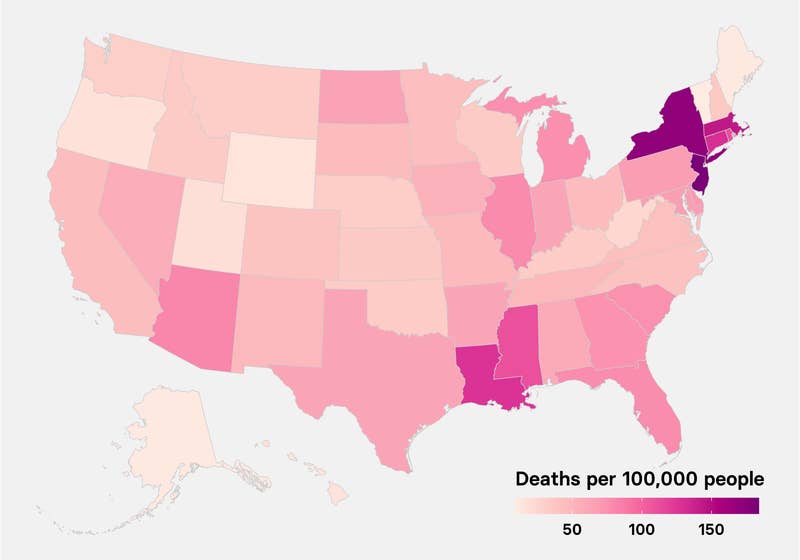as the president’s allies point fingers
Published on October 31, 2020 By Meaghan Ellis, AlterNet- Commentary

Many of the stories raise more questions about Trump’s leadership and the hidden agendas of his White House officials and other members of his administration.
Here’s a breakdown of the stories circulating this week:
1. Trump, Turkey President Recep Tayyip Erdogan, and the Turkish Bank
This report is yet another cloud over Trump and his administration regarding where their loyalty lies.
2. Pompeo Family Email Scandal
3. Rick Perry’s Dirty Dealing
As Election Day approaches, more incriminating reports are circulating and raising more questions about the integrity of the Trump administration.
Published on October 31, 2020 By Meaghan Ellis, AlterNet- Commentary

Bill Barr and Donald Trump (AFP)
It’s been a long, difficult week in Trumpworld with all of the incriminating reports of corruption surrounding President Donald Trump and his administration. With Election Day less than five days away, Trump is likely feeling the pressure as the opposing forces work overtime to state their case and prove that he is unfit for the office of the presidency.
It’s been a long, difficult week in Trumpworld with all of the incriminating reports of corruption surrounding President Donald Trump and his administration. With Election Day less than five days away, Trump is likely feeling the pressure as the opposing forces work overtime to state their case and prove that he is unfit for the office of the presidency.
Many of the stories raise more questions about Trump’s leadership and the hidden agendas of his White House officials and other members of his administration.
Here’s a breakdown of the stories circulating this week:
1. Trump, Turkey President Recep Tayyip Erdogan, and the Turkish Bank
A new report by the New York Times has uncovered details about Trump and U.S. Attorney Bill Barr questionable handling of possible violations of U.S. sanctions involving billions of dollars worth of gold and cash that was funneled to Iran.
When Geoffrey S. Berman, a top federal prosecutor in Manhattan, traveled to the White House to speak with Barr and some of his top administrative officials about the criminal investigation into the state-owned Turkish bank, Halkbank, Barr suggested that the bank be allowed to avoid indictment by paying only a fine and admitting that some wrong was done. Barr’s sentiments also echoed Turkey President Recep Tayyip Erdogan’s words as he had reportedly asked Trump repeatedly to stop the investigation. Trump’s presumed eagerness to please Erdogan has also raised questions about where the president truly stands. For Berman, Barr’s request raised red flags and questions about whether or not Barr was colluding with foreign operatives.
“This is completely wrong,” Berman later told lawyers in the U.S. Department of Justice, according to people who received intel about the proposal and Barr’s reaction. “You don’t grant immunity to individuals unless you are getting something from them — and we wouldn’t be here.”
When Geoffrey S. Berman, a top federal prosecutor in Manhattan, traveled to the White House to speak with Barr and some of his top administrative officials about the criminal investigation into the state-owned Turkish bank, Halkbank, Barr suggested that the bank be allowed to avoid indictment by paying only a fine and admitting that some wrong was done. Barr’s sentiments also echoed Turkey President Recep Tayyip Erdogan’s words as he had reportedly asked Trump repeatedly to stop the investigation. Trump’s presumed eagerness to please Erdogan has also raised questions about where the president truly stands. For Berman, Barr’s request raised red flags and questions about whether or not Barr was colluding with foreign operatives.
“This is completely wrong,” Berman later told lawyers in the U.S. Department of Justice, according to people who received intel about the proposal and Barr’s reaction. “You don’t grant immunity to individuals unless you are getting something from them — and we wouldn’t be here.”
This report is yet another cloud over Trump and his administration regarding where their loyalty lies.
2. Pompeo Family Email Scandal
U.S. Secretary of State Mike Pompeo was caught in the middle of an email scandal when it was revealed that he and his wife, Susan Pompeo had conducted official White House business using personal email addresses. Now, the couple is being investigated by both Congress and the State Department’s inspector generals for “potential misuse of government resources.” On multiple occasions, Susan Pompeo is said to have regularly utilized her personal email address for business matters, according to email correspondence.
“The emails show that Susan Pompeo routinely gives instructions to State Department officials from her personal email address about everything from travel plans and restaurant reservations to the elite Madison Dinners,” according to NBC News.
Below is an example of the types of messages Susan Pompeo sent to a State Department official. The message captures a conversation between her and a State Department official whose name was redacted from the record.
“The emails show that Susan Pompeo routinely gives instructions to State Department officials from her personal email address about everything from travel plans and restaurant reservations to the elite Madison Dinners,” according to NBC News.
Below is an example of the types of messages Susan Pompeo sent to a State Department official. The message captures a conversation between her and a State Department official whose name was redacted from the record.
“The dryer isn’t hooked up… I think you told me someone was coming to fix that?” Susan Pompeo said via text message to a State Department official. “Ma’am – On it, I was told it was fixed. Let me get you an answer,” the official responded by email hours later.
3. Rick Perry’s Dirty Dealing
A new report centers on former United States Secretary of Energy Rick Perry and his involvement in an attempted scheme to help some of his friends profit off a massive gas deal. Although Perry has denied the allegations, there are multiple details that highlight Perry’s ties to Ukraine, according to Pro Republica.
During a six-month investigation, reporters from Time magazine, WNYC and ProPublica discovered that “Perry and his staff at the Energy Department worked to advance energy deals that were potentially worth billions of dollars to Perry’s friends and political donors.”
Two of these deals seemed set to benefit Energy Transfer, the Texas company on whose board Perry served immediately before and after his stint in Washington. The biggest was worth an estimated $20 billion, according to U.S. and Ukrainian energy executives involved in negotiating them.
4. Wilbur Ross’ Chinese Conflict of Interest
During a six-month investigation, reporters from Time magazine, WNYC and ProPublica discovered that “Perry and his staff at the Energy Department worked to advance energy deals that were potentially worth billions of dollars to Perry’s friends and political donors.”
Two of these deals seemed set to benefit Energy Transfer, the Texas company on whose board Perry served immediately before and after his stint in Washington. The biggest was worth an estimated $20 billion, according to U.S. and Ukrainian energy executives involved in negotiating them.
4. Wilbur Ross’ Chinese Conflict of Interest
Like Perry, Ross found himself at the center of controversy when he failed to separate from his business ties while serving as the U.S. Commerce Secretary. According to ForeignPolicy.com, documents appear to suggest that Ross’ potential conflicts of interest surrounding Chinese business are much more evident than previously thought.
Here is a breakdown of the conflicts surrounding Perry, his business ties, and government affiliation.
Here is a breakdown of the conflicts surrounding Perry, his business ties, and government affiliation.
In Chinese corporate documents obtained by Foreign Policy, Ross is listed as serving on the board of a Chinese joint venture until January 2019—nearly two years into his term as commerce secretary. That joint venture, now called Huaneng Invesco WLR (Beijing) Investment Fund Management Co., is an investment partnership formed in September 2008 between Huaneng Capital Services, the U.S. management company Invesco, and a firm Ross founded, WL Ross & Co. Huaneng Capital Services is an arm of China Huaneng Group, a major state-owned power producer.
As Election Day approaches, more incriminating reports are circulating and raising more questions about the integrity of the Trump administration.

















